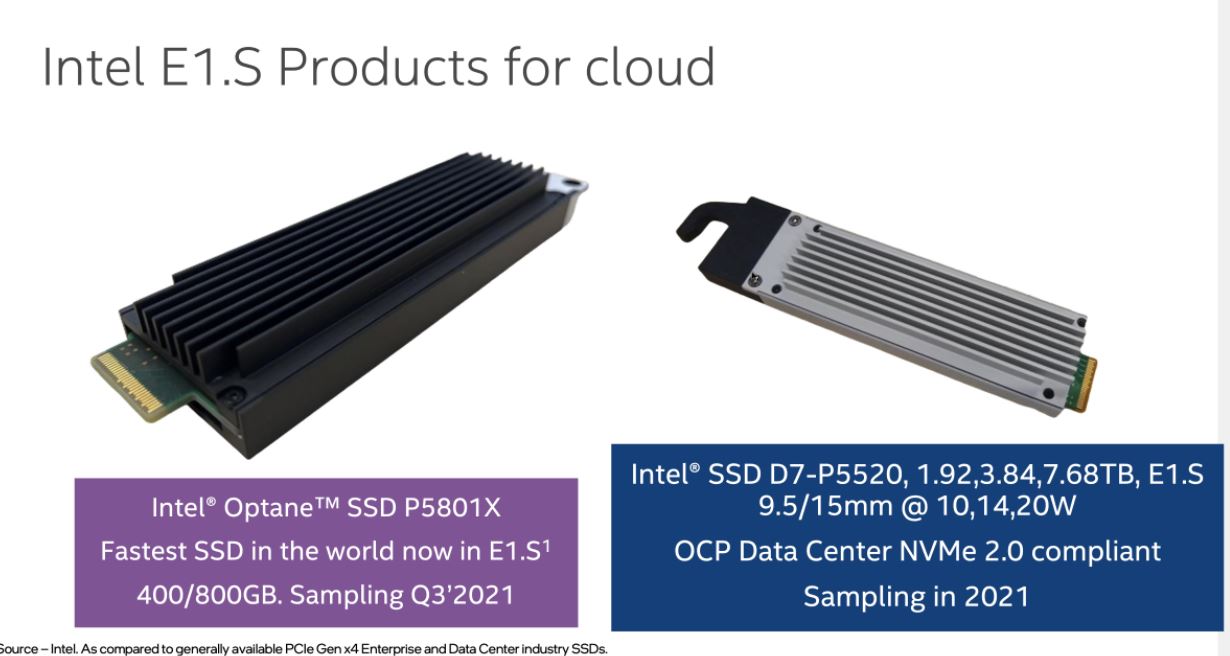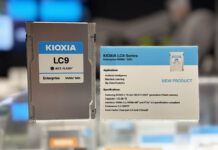Today, Intel announced two new SSDs in the EDSFF E1.S form factor. EDSFF is coming to data centers and the E1.S is designed to displace the M.2 form factor used today in servers. The new standard has benefits such as better cooling and hot-swap capabilities which can be challenges in M.2 SSD deployments. The new Intel Optane P5801X is a SSD designed for high-performance but lower capacity using 3D XPoint while the Intel D7-P5520 is designed for capacity and performance.
Intel Optane P5801X and D7-P5520 SSDs
The first drive that Intel is launching is a new Optane device. THe Intel Optane P5801X is going to be available in the 400GB and 800GB capacities for E1.S. Given that E1.S is designed to displace the M.2 drives, and the model numbers, we think this is an update to the 100GB Intel Optane DC P4801X 100GB M.2 we reviewed (also U.2 version here.) One of the challenges with the P4801X is that the size and cooling for the M.2 drive limited deployment scenarios and capacity. With E1.S we have a form factor that is designed to handle PCIe Gen4 and with better cooling.

The other drive is the Intel D7-P5520. These are still E1.S (short) drives but are designed to hit 1.92TB to 7.68TB of capacity. While there are higher capacity U.2 drives, these are performance-focused NAND SSDs from Intel and designed to be densely packed into servers. An example of this can be seen in the Intel Data Center Cloud Platform for E1.S below. One will see this 1U server has eight E1.S drive bays while also having two OCP NIC 3.0 slots, standard server I/O, and two full-height slots on the same faceplate. With today’s 2.5″ U.2 NVMe SSDs, we often only see 10x U.2 2.5″ bays on the front of a server. This is a much higher-density configuration while allowing more performance than M.2 SSDs.

Since our readers will wonder, we think the big Vulcan City (5U?) enclosure is designed for high-TDP possibly liquid-cooled platforms. One can however see that the same base 1U platform is in the second from the bottom U of the larger server chassis.
Final Words
For those who want a smaller Optane drive, the P4801X was a great drive, but 100GB after formatting is not a large capacity drive. In some cases, this left a stark trade-off in terms of capacity v. performance storage. With the P5801X we get the newer generation performance with higher capacity in a newer form factor. With the Intel D7-P5520, we get a high-performance E1.S drive. Over the next generation(s) we are going to see migration towards E1 and E3 form factors.
These drives are still a few months off, but it is great to see the new drives being launched for the new form factor.





I think it would be smart if Intel sold chassis like the one in the Vulcan demonstration picture, to end users evaluating their latest wares. I could really use a chassis made as well as that, branding and off white paint and all, for presentation to customers. The fact that you need to go all in with Intel to gain the potential performance from increasingly complicated configurations and this assumes you are writing codes to take advantage, absolutely wants to look more impressive to get the PO signatures.
No performance information? How fast are they?
It looks like they won’t be available until next year, if they’re barely “sampling” in Q3 of this year. Have you noticed that the D7-P5510 that they announced five months ago is still available anywhere?
will p5801x receive a m.2 form factor? originally the 4801x and 905p was going to get a m.2 780GB version which never came, especially with consumer 906p being cancelled now.